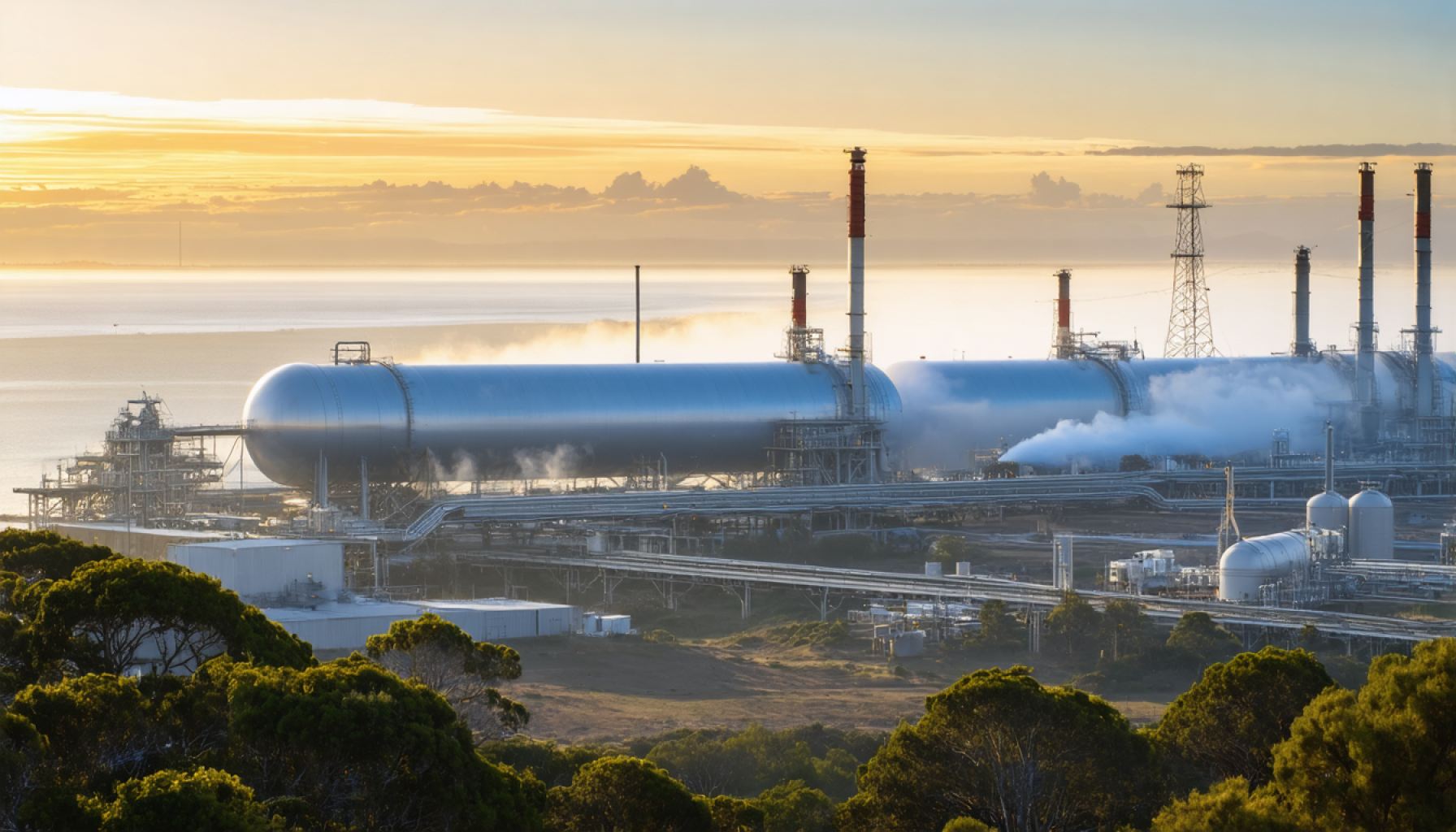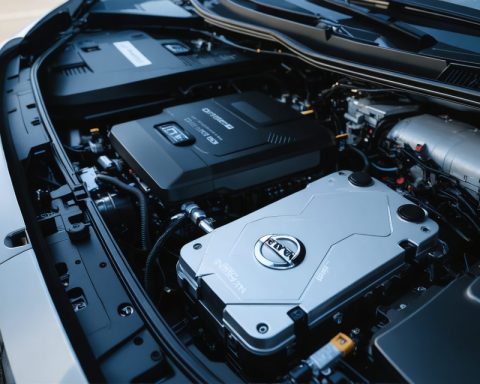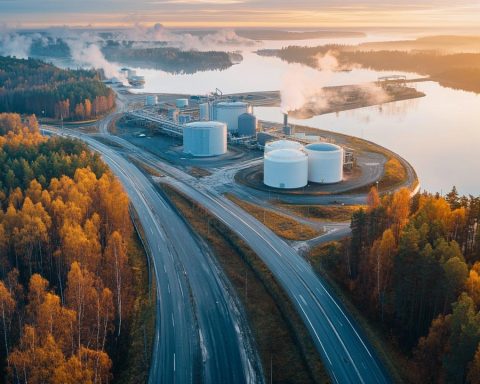- Australia’s green hydrogen ambitions face uncertainty amid potential political shifts and elections.
- Six flagship hydrogen projects are at risk, with financial viability concerns and waning investor confidence.
- Countries like Japan, South Korea, and Singapore may need to adjust their energy strategies depending on Australia’s political outcome.
- Current incentives totaling over $5 billion aim to support the hydrogen sector, but opposition may limit funding.
- The development of renewable hydrogen infrastructure is crucial and requires consistent government support to thrive.
- The upcoming elections will serve as a crucial moment for Australia’s dedication to a sustainable energy future.
Australia stands at a pivotal juncture, a nation caught between its sustainable aspirations and political uncertainties that threaten to derail its eco-friendly ambitions. The country’s quest to emerge as a green hydrogen powerhouse now faces turbulent seas, as political winds suggest a potential shift in direction. With elections looming, the existing momentum towards harnessing wind and solar power to fuel a hydrogen future teeters on a precarious edge.
Once a gleaming beacon of promise, six flagship projects championed by a government initiative find themselves adrift. A Singapore-based analysis reveals a disconcerting drop in their ratings, rendering them financially unviable and raising red flags about their future. The loss of key backers and paused progress casts long shadows over a $2 billion initial program that sought to ignite this nascent sector.
The political narrative intensifies as Australia stares down the prospect of a new ruling party. Should the current government fall, the ripple effects would travel far beyond the continent’s shores. Nations like Japan, South Korea, and Singapore, previously eyeing Australia’s green hydrogen as a pivotal low-emission fuel source, may need to recalibrate their expectations and strategies.
Amidst this political chess game, the stakes remain incredibly high. Anthony Albanese’s administration had charted a bold vision, leveraging its sun-drenched and windy landscapes to craft a future powered by clean hydrogen. Over $5 billion in incentives were laid on the table to nurture this fledgling industry. Yet, opposition forces—now leading in the polls—appear poised to chisel away at these green dreams, denying substantial funding for major projects.
The crux of the challenge lies in the precarious balance of government support. Renewable hydrogen, while promising, struggles to stand on its own without robust financial backing. The pace of change and funding allocation becomes critical to shepherd this industry from its infancy to a vibrant, self-sustaining reality.
The impending elections aren’t just a political match—they are a referendum on Australia’s commitment to a sustainable future. As the country edges closer to deciding its path, the world watches closely, waiting to see whether Australia will steer towards the sunrise of innovation or retreat into the shadows of missed opportunity.
Australia’s Hydrogen Future at the Crossroads: Challenges and Opportunities
Australia stands at a critical juncture as it navigates its aspirations to become a leader in green hydrogen production. The nation’s progress towards utilizing wind and solar energy to fuel a hydrogen-driven economy faces significant challenges due to political uncertainties and potential shifts in direction. This article delves deeper into the factors influencing Australia’s green hydrogen journey and explores possible pathways forward.
The Current State of Australia’s Hydrogen Projects
Australia has been earmarked as a promising hub for green hydrogen development due to its rich natural resources. However, recent evaluations indicate that six major government-backed projects are struggling. According to a Singapore-based analysis, these flagship initiatives are now considered financially unviable, which raises concerns over their feasibility and long-term impact.
Political Influences and Elections
Political transitions can significantly impact the country’s green hydrogen ambitions. The impending elections are a potential turning point. If the opposition party, currently leading in the polls, wins control, it may deprioritize green hydrogen funding, which could alter Australia’s trajectory in sustainable energy. These domestic political dynamics also have broader international implications, especially for nations like Japan, South Korea, and Singapore, who view Australian hydrogen as a crucial energy source.
Economic and Environmental Prospects of Green Hydrogen
Despite the setbacks, green hydrogen holds considerable potential for economic growth and environmental sustainability. When produced using renewable resources, it emits no carbon emissions, making it a cornerstone for global de-carbonization efforts. With a potential market forecast projecting substantial growth in hydrogen production and consumption worldwide, Australia could tap into lucrative international supply chains if it surmounts its current hurdles.
Real-World Use Cases
Green hydrogen can transform several industries:
– Transportation: Hydrogen-powered vehicles, including buses and trucks, can help reduce emissions.
– Industrial Applications: Green hydrogen can decarbonize industries such as steel and cement manufacturing.
– Energy Storage: It serves as an efficient energy carrier that can store renewable energy surplus for later use.
Challenges and Limitations
The primary challenges for green hydrogen in Australia include:
– High Initial Costs: Financial investment is necessary to build infrastructure and develop technology.
– Political Uncertainty: Shifting political priorities can influence funding and project support.
– Market Development: Infrastructure for hydrogen production, storage, and distribution needs significant development before the industry can thrive independently.
How Can Australia Move Forward?
1. Diversified Investment: Fostering public-private partnerships could mitigate the risk of government policy changes.
2. Grid Enhancements: Upgrading infrastructure to support seamless energy distribution is crucial.
3. International Collaboration: By partnering with other countries, Australia can attract investment and accelerate innovation.
4. R&D Investment: Continued focus on research and development will reduce costs and improve the scalability of hydrogen technology.
Quick Tips for Policymakers and Industry Leaders
– Maintain Policy Stability: Establish bipartisan agreements to ensure long-term project support regardless of political changes.
– Incentivize Private Investments: Introduce tax credits and subsidies to encourage private sector investment.
– Focus on Public Awareness: Educate the public and stakeholders about the benefits and prospects of hydrogen energy.
Conclusion
Australia’s green hydrogen landscape is fraught with challenges but replete with opportunities for transformation. As the nation prepares for potential political shifts, it remains crucial to foster an environment that supports innovation and sustainability. By aligning industry, government, and international partners, Australia can remain at the forefront of the green hydrogen revolution.
For more insights on global energy trends and innovation, visit CNBC and BBC.












